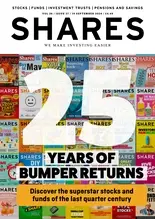
Both the pound and London's FTSE 100 stock index were in full retreat early Thursday, after official figures showed the UK economy grew by less than expected in the first quarter of the year and actually shrank in March.
The FTSE 100 index was down 173.74 points, or 2.4%, at 7,173.92 early Thursday. The mid-cap FTSE 250 index was down 394.90 points, or 2.0%, at 19,252.25. The AIM All-Share index was down 15.21 points, or 1.6%, at 938.69.
The Cboe UK 100 index was down 2.3% at 715.30. The Cboe 250 was down 2.0% at 16,973.90, and the Cboe Small Companies down 0.3% at 14,591.09.
The UK economy grew at the slowest pace in a year at the start of 2022, as official figures showed a contraction in March amid mounting fears that the cost-of-living crisis may plunge the UK into recession.
For the first quarter of 2022, UK gross domestic product is expected to have increased 0.8% versus the immediately previous quarter, which is behind market consensus - according to FXStreet - of 1.0% quarter-on-quarter expansion.
In the final quarter of 2021, the GDP grew by 1.0% on quarterly basis.
Annually, GDP rose 8.7% in the first quarter, but this too was behind market forecasts of 9.0% growth.
The ONS noted that the economy was 0.7% bigger than its pre-coronavirus level, which covers the final three months of 2019.
However, economic performance deteriorated during the course of the first three months of this year. Monthly estimates show that GDP rose by 0.7% in January, followed by no growth in February 2022 and a fall of 0.1% in March 2022.
‘The weakness in February and March gives a taste of what to expect from now on,’ commented Daiwa Capital Markets Europe.
‘With real disposable incomes falling sharply, we forecast a slight decline in GDP in Q2 and - in the absence of extra government support for households - a further step down before year-end if and when the regulated energy price cap is hiked again in October. The weakness of the GDP outlook is one reason why we expect the BoE to end its tightening cycle after one further 25bps rate hike in August, and why we also expect inflation to fall back steadily over the coming year.’
The pound was quoted at $1.2194 early Thursday, and fell as low as $1.2188 after the release of the GDP data, which is a level not seen since May 2020, and was down from $1.2323 at the London equities close on Wednesday.
In Paris, the CAC 40 stock index and the DAX 40 in Frankfurt were down 2.3%.
In London, BT was among the few companies in the FTSE 100 in the green in early trading, gaining 1.7%.
The telecommunications firm said it delivered a ‘strong’ performance in financial 2022, and has set up a new joint venture with Warner Bros Discovery to show sport in the UK and Ireland.
The 50-50 JV will see BT Sport and Eurosport combine.
‘By bringing together the sports content offering of both BT Sport and Eurosport UK, the JV will have one of the most extensive portfolios of premium sports rights including UEFA Champions League, UEFA Europa League, the Premier League, Premiership Rugby, UFC, the Olympic Games, tennis Grand Slams featuring the Australian Open and Roland-Garros, cycling Grand Tours including the Tour de France and Giro d'Italia and the winter sports World Cup season,’ BT explained.
Once the deal closes, the production and operational assets of BT Sport will become a wholly owned subsidiary of Warner Bros. BT will get £93 million from Warner Bros and up to £540 million by way of an earn-out.
Turning back to results, BT reported pretax profit in the financial year that ended March 31 of £1.96 billion, improved from £1.80 billion in the same period a year prior.
Revenue fell to £20.85 billion from £21.33 billion. BT noted revenue growth from its Openreach business was offset by a fall in Enterprise and Global, while Consumer - its biggest unit - was flat.
Chief Executive Philip Jansen said: ‘Openreach continues to build like fury, having now passed 7.2 million premises with 1.8 million connections; a strong and growing early take-up rate of 25%. Meanwhile, our 5G network now covers more than 50% of the UK population. We have the best networks in the UK and we're continuing to invest at an unprecedented pace to provide unrivalled connectivity for our customers. At the same time we're seeing record customer satisfaction scores across the business.’
Rolls-Royce was 1.0% higher. The jet engine maker said its performance year-to-date has been in line with expectation, and it has left its 2022 guidance unchanged.
‘We are well positioned for the anticipated growth in our end markets and continue to expect positive momentum in our financial performance in 2022 despite the ongoing risks around macroeconomic uncertainties,’ Rolls said.
It noted its Civil Aerospace business saw large engine long-term service agreement flying hours for the first four months of 2022 jump 42% versus the prior year period.
Rolls continued: ‘Passenger demand is recovering on routes where travel restrictions have been lifted, such as in Europe and the Americas, but additional Covid-19 restrictions have resulted in fewer flights in China where the situation is still evolving.’
At the other end of the blue-chip index, Hargreaves Lansdown was down 8.9%.
The fund supermarket said it has made an ‘encouraging’ start to 2022 and has ended April 30 with assets under administration of £132.3 billion.
Hargreaves said its client growth in the four-month period to the end of April was in line with pre-Covid levels, adding 90,000 clients year to date versus 87,000 in the same period in 2019.
The firm did warn, however, of the ‘uncertain’ economic environment, so will look to focus on ‘cost control and investment discipline’.
‘The challenging backdrop driven by unprecedented macro-economic and geo-political events has impacted markets and investor confidence, in turn leading to moderated flows and asset levels with net new business of £2.5 billion in this period,’ Hargreaves added.
In the US on Wednesday, equities ended firmly in the red, amid fears the US Federal Reserve will hike rates aggressively with inflation remaining at near 40-year highs. The Dow Jones Industrial Average closed down 1.0%, the S&P 500 down 1.7%, and the Nasdaq Composite down 3.2%.
Data from the US Bureau of Labor Statistics on Wednesday showed consumer prices rose 8.3% in April from a year before. While this marked a slowdown from March's 8.5% annual rise, the increase was faster than the 8.1% expected by the market.
In Asia on Thursday, the Japanese Nikkei 225 index closed down 1.8%. In China, the Shanghai Composite ended 0.1% lower, while the Hang Seng index in Hong Kong was down 2.4% in late trade. The S&P/ASX 200 in Sydney ended down 1.8%.
Brent oil was quoted at $105.09 a barrel Thursday morning, down sharply from $107.27 late Wednesday. Gold stood at $1.850.30 an ounce, higher than $1,849.37.
The euro was priced at $1.0456, sharply lower against $1.0540. Against the yen, the dollar was trading at JP¥128.78, down significantly from JP¥130.23.
Still to come on Thursday, US producer prices are at 1330 BST.
Copyright 2022 Alliance News Limited. All Rights Reserved.




